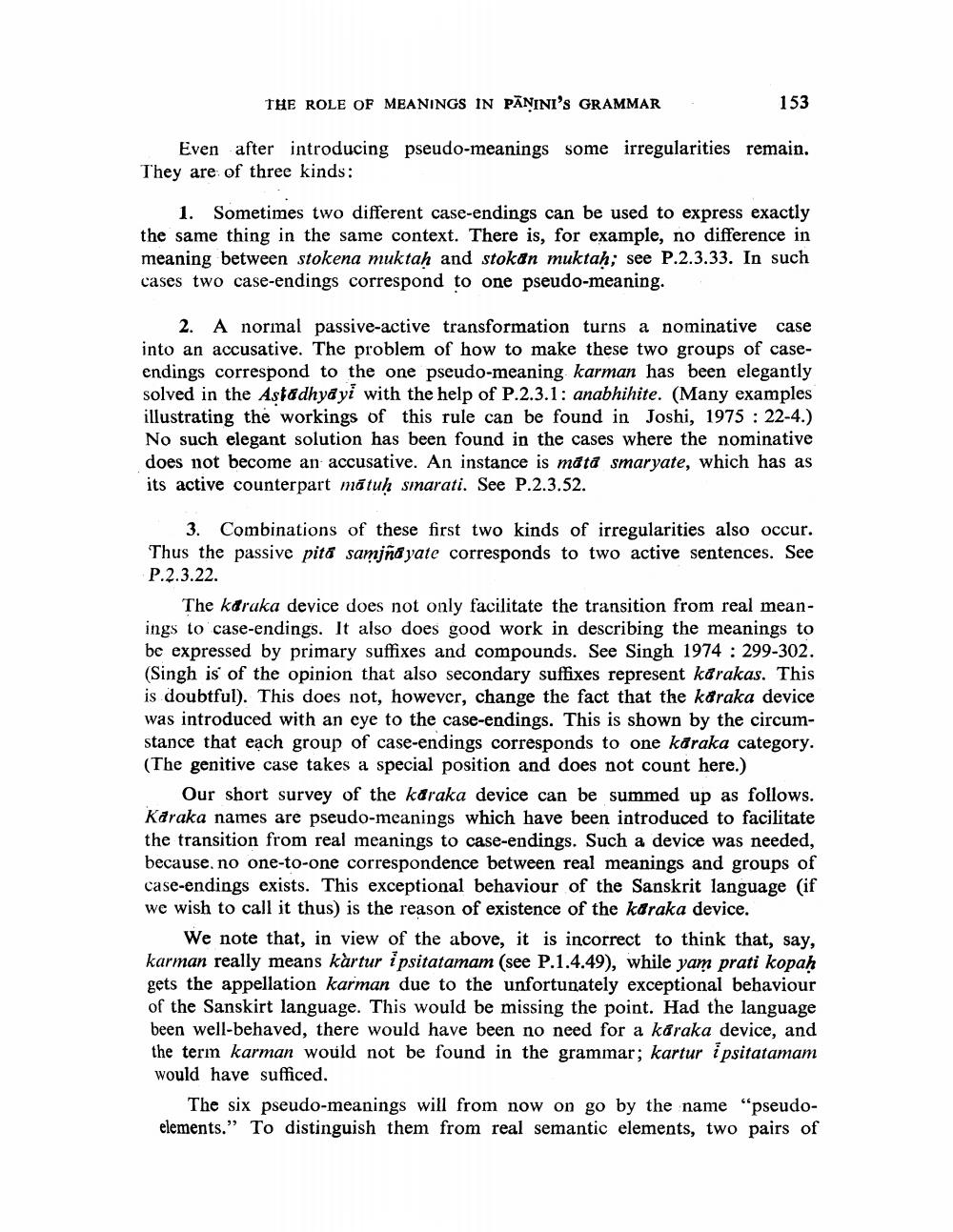Book Title: Role Of Meanings Uin Paninis Grammar Author(s): Johannes Bronkhorst Publisher: Johannes Bronkhorst View full book textPage 8
________________ THE ROLE OF MEANINGS IN PANINI'S GRAMMAR 153 Even after introducing pseudo-meanings some irregularities remain. They are of three kinds: 1. Sometimes two different case-endings can be used to express exactly the same thing in the same context. There is, for example, no difference in meaning between stokena muktah and stokan muktah, see P.2.3.33. In such cases two case-endings correspond to one pseudo-meaning. 2. A normal passive-active transformation turns a nominative case into an accusative. The problem of how to make these two groups of caseendings correspond to the one pseudo-meaning karman has been elegantly solved in the Astadhyayi with the help of P.2.3.1: anabhihite. (Many examples illustrating the workings of this rule can be found in Joshi, 1975 : 22-4.) No such elegant solution has been found in the cases where the nominative does not become an accusative. An instance is mata smaryate, which has as its active counterpart mõtuh smarati. See P.2.3.52. 3. Combinations of these first two kinds of irregularities also occur. Thus the passive pitä samjna yate corresponds to two active sentences. See P.2.3.22. The karaka device does not only facilitate the transition from real meanings to case-endings. It also does good work in describing the meanings to be expressed by primary suffixes and compounds. See Singh 1974 : 299-302. (Singh is of the opinion that also secondary suffixes represent karakas. This is doubtful). This does not, however, change the fact that the koraka device was introduced with an eye to the case-endings. This is shown by the circumstance that each group of case-endings corresponds to one käraka category. (The genitive case takes a special position and does not count here.) Our short survey of the käraka device can be summed up as follows. Karaka names are pseudo-meanings which have been introduced to facilitate the transition from real meanings to case-endings. Such a device was needed, because no one-to-one correspondence between real meanings and groups of case-endings exists. This exceptional behaviour of the Sanskrit language (if we wish to call it thus) is the reason of existence of the koraka device. We note that, in view of the above, it is incorrect to think that, say, karman really means kartur i psitatamam (see P.1.4.49), while yam prati kopah gets the appellation karman due to the unfortunately exceptional behaviour of the Sanskirt language. This would be missing the point. Had the language been well-behaved, there would have been no need for a karaka device, and the terin karman would not be found in the grammar; kartur i psitatamam would have sufficed. The six pseudo-meanings will from now on go by the name "pseudoelements." To distinguish them from real semantic elements, two pairs ofPage Navigation
1 ... 6 7 8 9 10 11 12
